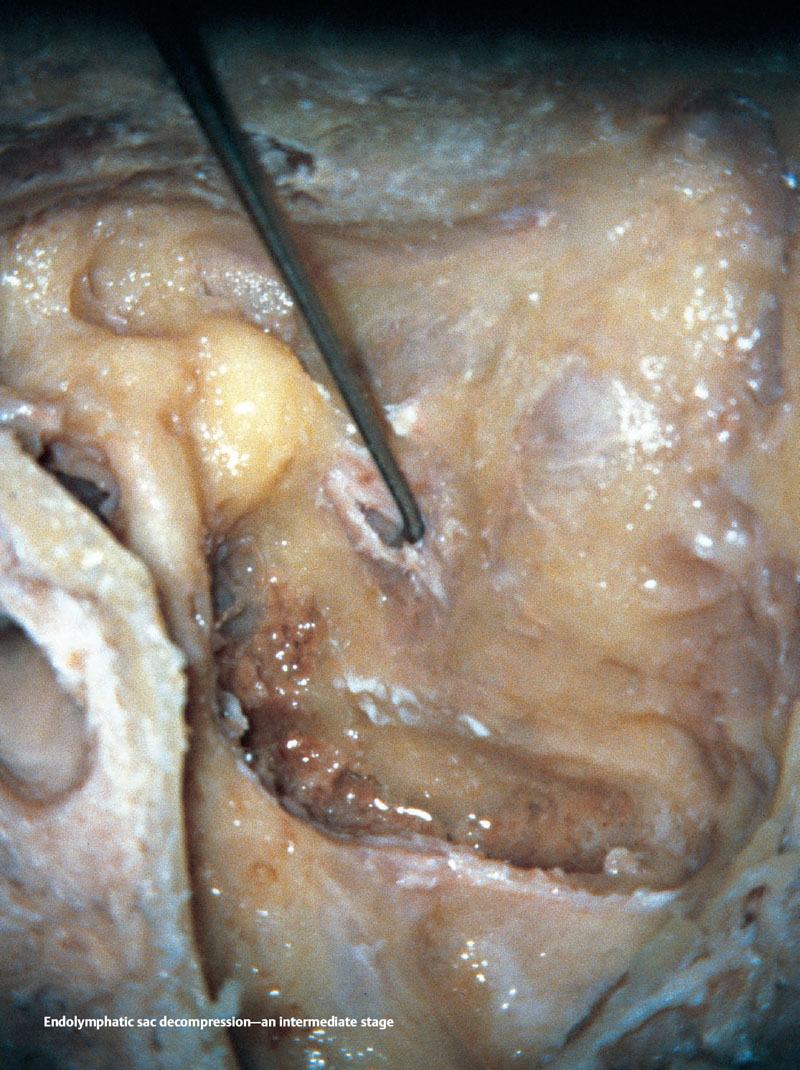21 Endolymphatic Sac Decompression Following a cortical mastoidectomy, decompression of the endolymphatic sac by removal of bone between the posterior semicircular canal and sigmoid sinus, and placement of a shunt tube from the endolymphatic sac lumen toward the created mastoid cavity. It is used as an alternative surgical technique to treat Ménière disease. Endolymphatic sac decompression will be demonstrated on the temporal bone in which an extended cortical mastoidectomy has been carried out. In the operation, there is no need to carry out a posterior tympanotomy or expose the epitympanum during this procedure. EAC: External auditory canal DR: Digastri ridge MCF: Middle cranial fossa (dural plate) SS: Sigmoid sinus (dural plate) The retrolabyrinthine cells have already been extirpated. In this stage, the retrolabyrinthine, i.e., the presigmoid area, is skeletonized using a medium-sized diamond burr. In addition, the retrofacial cells are removed. II: 3–4mm diamond burr MIL: Posterior semicircular canal RFC: Retrofacial cells RLC: Retrolabyrinthine cells (removed) HSC: Horizontal semicircular canal MFN: Mastoid facial nerve PSC: Posterior semicircular canal SSC: Superior semicircular canal
Definition
Indications
Anatomical Orientation
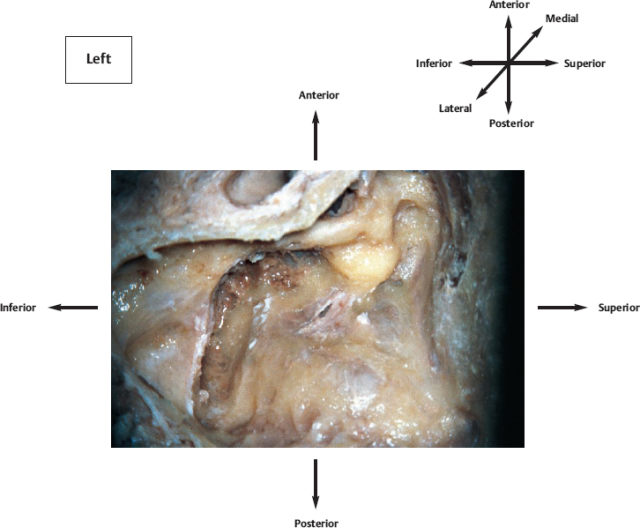
Surgical Steps
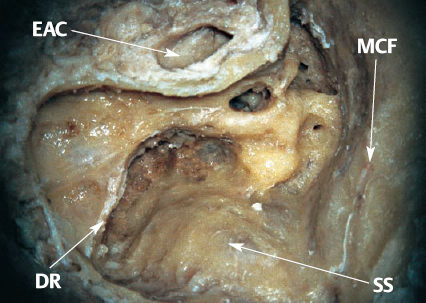
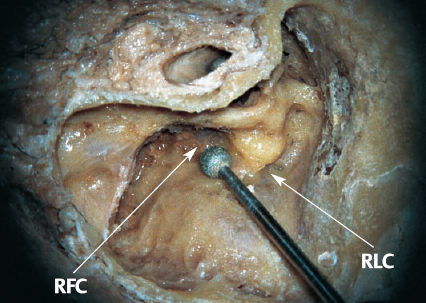
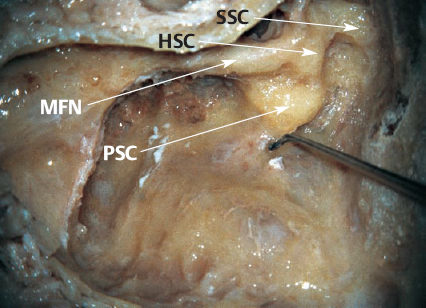
![]()
Stay updated, free articles. Join our Telegram channel

Full access? Get Clinical Tree


